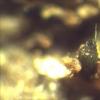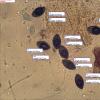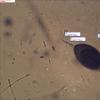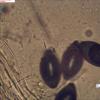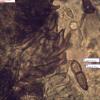
25-11-2013 22:58
 Joop van der Lee
Joop van der Lee
Found on cow dung. Top of neck covered with agglu

23-11-2013 18:50
 Joop van der Lee
Joop van der Lee
Found on cow dung,Fruitbody bright yellow with a r

25-11-2013 20:32
 Joop van der Lee
Joop van der Lee
Found on cow dung.The asci contain 4 spores instea

24-11-2013 18:45
 Björn Wergen
Björn Wergen
Hi friends,and again, there is an interesting pleo

24-11-2013 10:10
 Alessio Pierotti
Alessio Pierotti
Some friend have this article ?Cannon, P. F. 1997.

22-11-2013 16:39
Mateusz WilkDear Friends!I am desperately seeking these articl

22-11-2013 22:29
 Maren Kamke
Maren Kamke
Hi everybody,I found this one on wood (Fagus or Qu

22-11-2013 13:06
Gernot FriebesHi,looking for literature again. :-) This time:Apt

22-11-2013 13:05
Garcia SusanaHi again. This ascomycete also was growing in she

21-11-2013 20:59
Garcia SusanaHi all I've found this ascomycete in sheep dung.A

Found on cow dung.
Top of neck covered with agglutinated hairs which form a ring.
Asci: not able to measure
Spores: biseriate; 22.62-25.47x13.82-14.83 um; pedicel 8.26x2.12; upper cauda 20.48x1.77 um; spores contain a large "de Barry bubble"

it should be Schizothecium conicum.
regards,
björn

